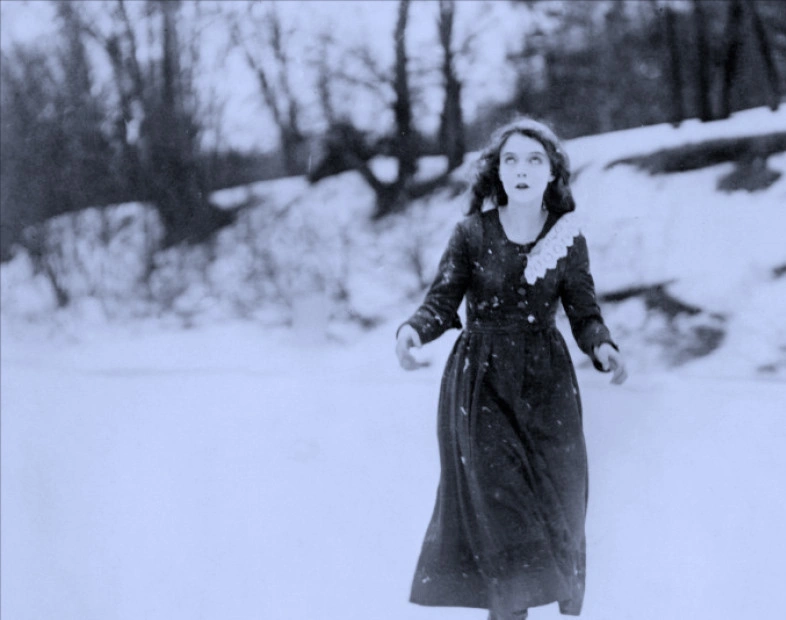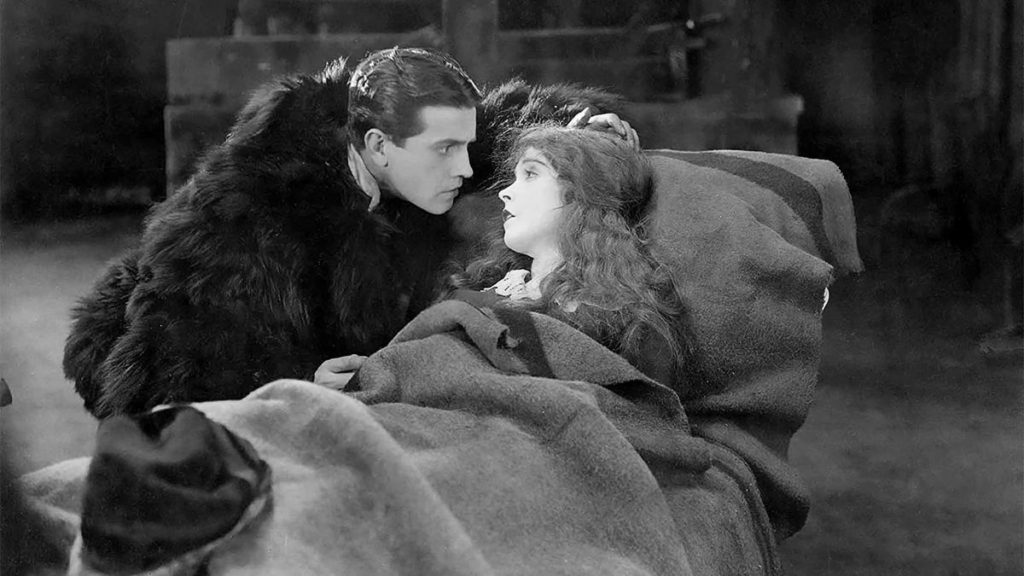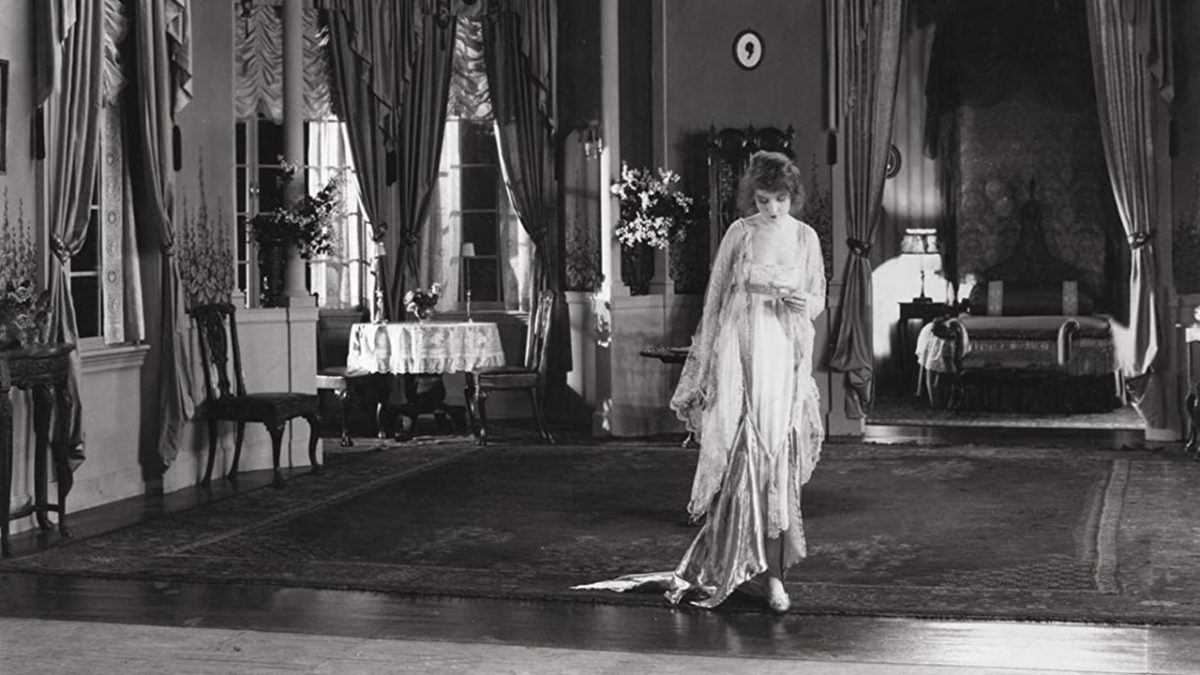This is the fourth DW Griffith film I’ve watched in my tour through film history, and the fourth starring Lillian Gish. It’s clear that Griffith spent each successive film figuring out how to highlight her electric charm. Because this movie rides or dies by Gish: When she’s onscreen, it’s magnetic. When she’s off, it’s a bit of a slog.
But, man, Lillian Gish! Early cinema incarnate. She’s absolutely lovely and endearing here, with one brutal situation after another to suffer through while always evoking some inner reserve of humanity and dignity. She’s a scene-stealer in every scene, with dynamic and expressive facial expressions. I suspected it when I watched Broken Blossoms, but know it without question here: Lillian Gish a true movie star, someone who’s good enough that it’s probably worth watching when she’s in the credits even if the rest of the movie doesn’t hold up. (That’s the case here, I regret to say.)

The story of Way Down East is sprawling and episodic: we start with a country-girl-corrupted tragedy, followed by an ensemble romantic pastoral dramedy, and lastly a dramatic rescue adventure. The whole story follows the arc of Gish’s Anna as she’s put through an emotional wringer in her quest for love. It’s a lot of story in 2.5 hours, and it feels even longer than the runtime.
Much of this is an unfocused drag – in particular, the extremely dumb comic relief characters that fill out the movie’s second half. While Lowell Sherman is great as the slimy but human Lennox and Richard Barthelmess is fine as the longing lover, the rest of the acting is pretty painfully over-the-top.
Way Down East also tests the viewer’s tolerance of emotional torture of Gish. This makes two movies in a row I’ve seen by Griffith that is built around the abuse of Gish by prominent men in society. I really had a hard time stomaching the worst of her bad luck, especially as nothing is really ever her own fault. She’s a passive, suffering rider for most of the narrative, to the point that she feels like a punching bag.

Griffith’s visual work is excellent as ever. The costumes and sets are rich, detailed, and distinctive, which is basically a given for a Griffith flick. There’s also a pleasing haziness to the cinematography when Gish is on screen, as if an angelic hue surrounds her. The lighting is more accomplished than ever for Griffith: I particularly loved some highly evocative moments that capture Gish against a black background, highlighting her emotionally intense moments. The editing, while still competent and effective, is less striking than his previous work, with typical rhythms of establishing shot → medium shots → occasional close-ups.
The movie ends with two set pieces: first, an elaborate dance segment, then, a rescue on floating ice. The dance segment, in particular, is a joy: Griffith takes his large-scale battle staging genius and applies it to an old-fashioned hoedown. There’s a kinetic grace to it that makes you want to join the party. The ice rescue — the film’s most famous segment, if I am to trust Wikipedia — is a bit quaint with modern eyes, but still has some gravity of danger that results in visceral relief when Anna is saved. Still, Griffith captures human drama more skillfully than derring-do or spectacle in this film.
The film is also hurt by poor preservation: Some scenes are lost and simply described in intertitles or still photos, while others are degraded to a distracting degree. Scenes with low light that might have had subtle lighting technique upon initial printing are instead drowned in dark fogginess.

Unfortunately, Way Down East lags quite a bit compared to Broken Blossoms from a year earlier. Where that film had a tight plot focus and a very strong sense of place and space, Way Down East fails to hit with the same intensity. Certain moments are powerfully effective — particularly Anna’s nadir as Gish controls every frame — but at 150 minutes, so much feels inessential and tedious that I have difficulty recommending it in a vacuum.
If, on the other hand, you like soaking in movie stars no matter how dire the material around them, then this is a Lillian Gish masterpiece.
(I’m attempting to watch 1001 Films to See Before Your Die in chronological order. This is film number 9. Up next is the fifth and final DW Griffith drama, Orphans of the Storm, from 1921.)
- Review Series: D.W. Griffith
Is It Good?
Not Very Good (3/8)
A few words on "Is It Good?" ratings for early cinema.
Dan is the founder and head critic of The Goods. Follow Dan on Letterboxd. Join the Discord for updates and discussion.

